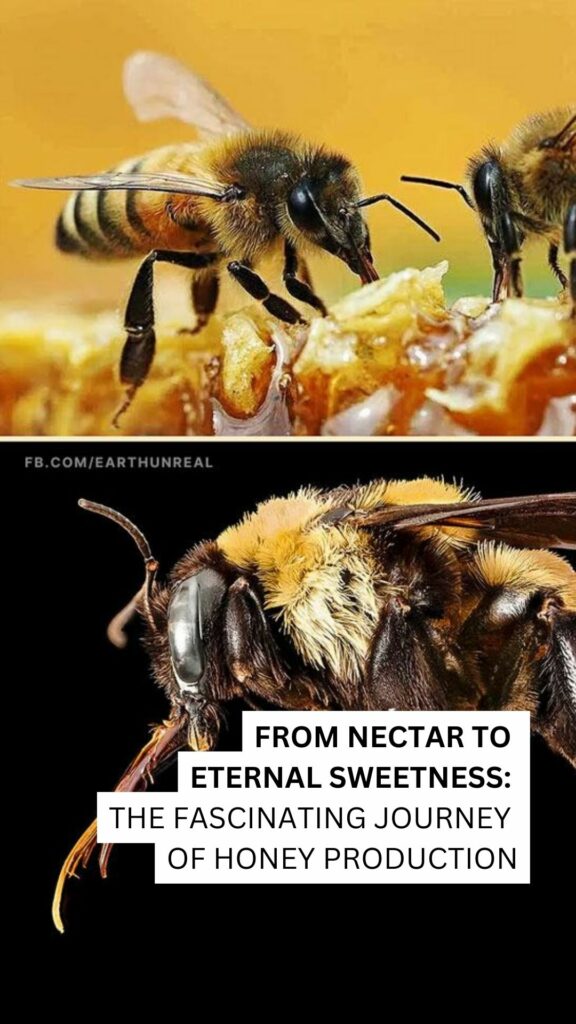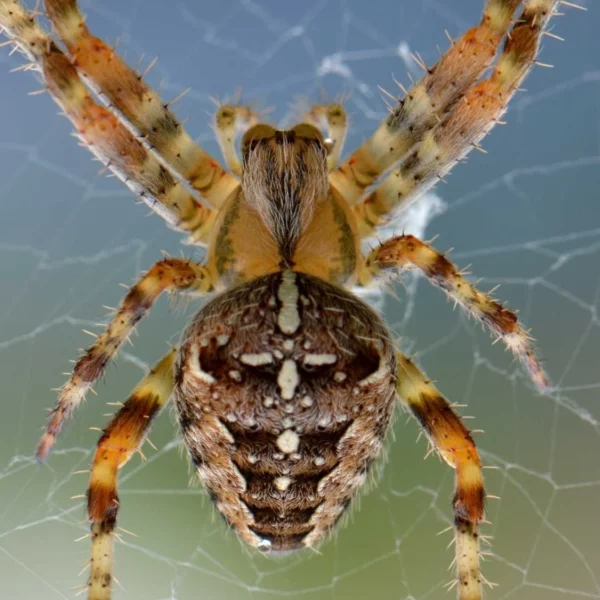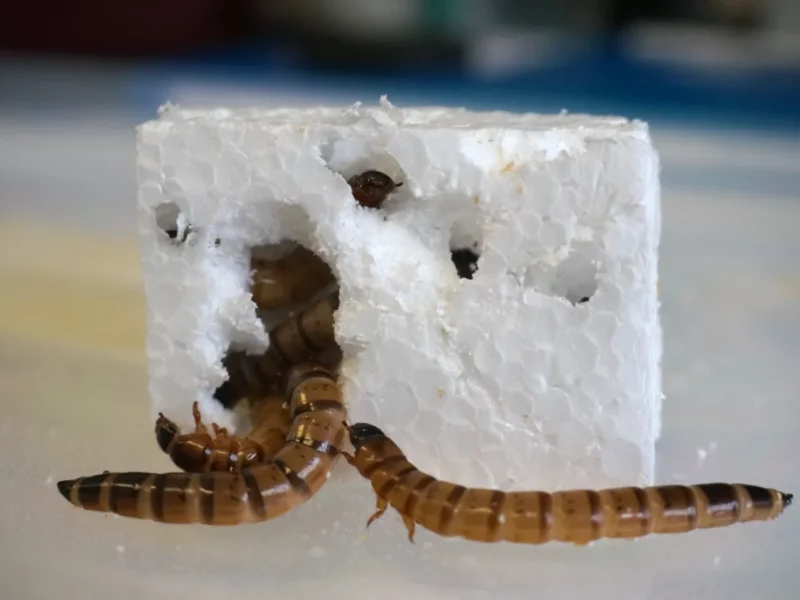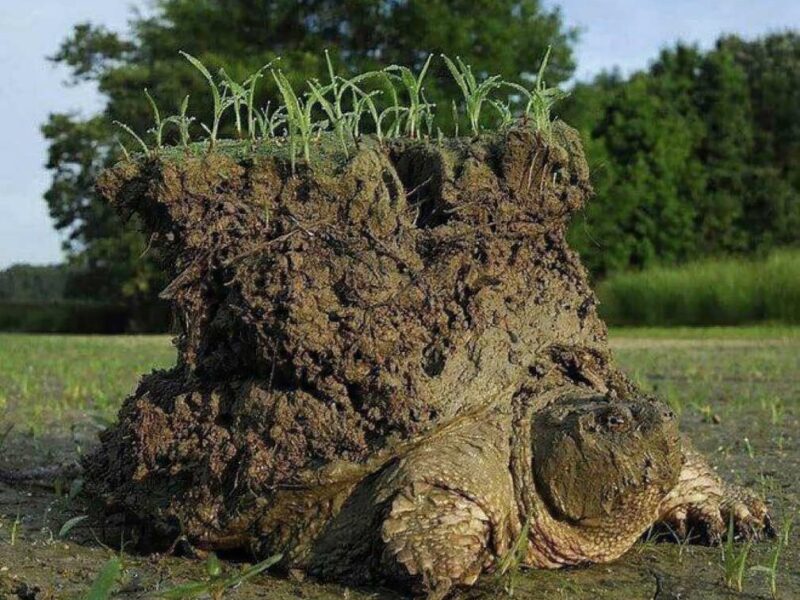
As you must have noticed by now, many of our posts about honey bees show that we deeply admire these charming creatures and rightfully so.
Honey production starts when worker bees use their long, tube-shaped tongues to collect nectar from flowers. They store the nectar in a special stomach inside their bodies. Enzymes in the bees’ stomachs break down the nectar’s complex sugars into simpler sugars like glucose and fructose.
Once back at the hive, a bee regurgitates the partially digested nectar into another bee’s mouth. This process repeats, reducing the nectar’s moisture content. The bees then deposit the thickened nectar into honeycomb cells. By fanning their wings over the combs, they evaporate more moisture.
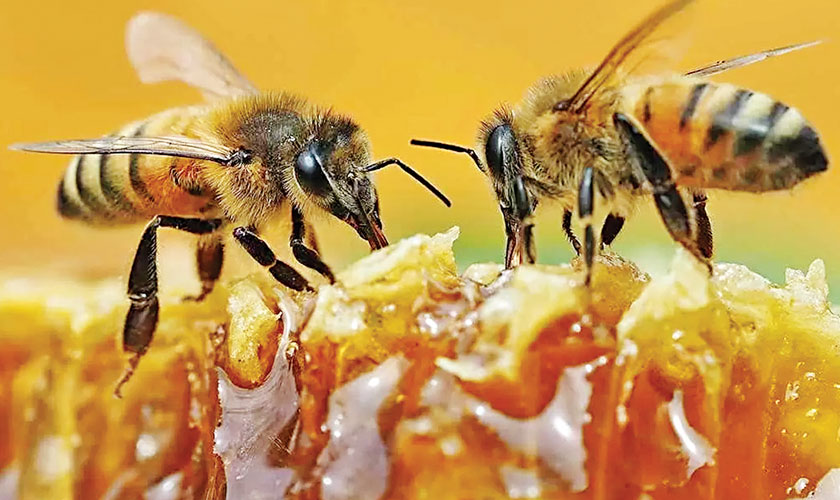
During this process, bees may taste the developing honey. Worker bees are often seen drinking honey from the combs inside the hive. Honey is a vital food source for the colony, especially in times when other food is scarce like winter.
But honey is more than just food for bees. Its natural properties as a preservative, like low moisture, high sugar, and acidic pH, prevent bacteria growth. This allows it to stay edible for an extraordinarily long time.
Text credit: Earth Unreal
Did you enjoy this article? Pin it for later.
And while you’re on Pinterest, come follow us and pin along with us.
